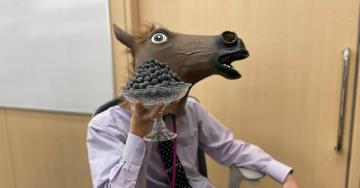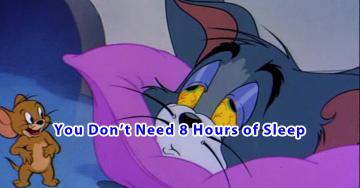First identified by a French philosopher more than 250 years ago, it describes how one purchase can lead to another.
The Diderot Effect is a fascinating phenomenon that most of us have experienced at some point of life, probably without realizing it. Named after the French philosopher and writer Denis Diderot, who lived in the mid-1700s, the Diderot Effect occurs when a person buys something, and then finds themselves buying yet more things as a result of that initial purchase. In other words, it's a cascade of consumption.
Diderot experienced this firsthand in 1765, when the Russian empress Catherine the Great asked to buy his private library for £1,000 (equivalent to US$50,000 in 2015, according to James Clear, whose article first informed me of this story). Suddenly flush with cash, Diderot bought a new dressing gown, only to discover how shabby all his other clothes and household goods looked in comparison. This sparked a shopping frenzy that wasted far more money than he ever intended. In Diderot's words,
"I was absolute master of my old dressing gown, but I have become a slave to my new one."
Haven't we all found ourselves in this situation before? Clear gives a list of examples in his wonderful article, citing a CrossFit membership, which then leads to buying "foam rollers, knee sleeves, wrist wraps, and paleo meal plans." I had to laugh because, yes, I've done all that (minus the paleo meal plans).
It got me thinking about the sports lessons I've signed my kids up for, which are fun and important but come with all sorts of associated equipment costs. I remembered the times I've bought outfits, and then needed shoes or jewelry to go with them. Right now I'm in the midst of a house renovation, and my husband and I are trying to limit which furniture we'll buy to fit the new and reduced space. These are just a handful of examples of the Diderot Effect, but I'm sure every reader can identify.
This is problematic for a number of reasons. Not only is debt incurred and money wasted that could otherwise be saved, but houses fill up and become cluttered, messy, and unpleasant to inhabit. Then there is the environmental impact of so much consumption. Every item purchased represents resources extracted, molded, and shipped across the globe, only to end up in landfill at some point in time. The more we buy, the more we throw away – and the more harm is done to the planet.
Once aware of the Diderot Effect, however, it becomes easier to spot it creeping up on us. That's when we can implement the following strategies for counteracting it. (These come via James Clear, Joshua Becker, and Trent Hamm, along with my own ideas.)
1. Reduce exposure to advertising. This is Clear's first and strongest point. The more time you spend consuming ads for new products, the more you'll want them. Avoid social media, YouTube, TV, and all platforms that would drain your wallet if you let them.
2. One in, one out. If you buy something, remove another item from your home. Do not shuffle it elsewhere, but make sure it leaves your property completely. This combats clutter and prevents that slow, invisible buildup.
3. Analyze the full cost of purchases. Becker describes the outfit problem I mentioned above, i.e. needing accessories to go with a cute new dress, which makes it a more expensive purchase than initially thought. Know exactly what you're spending before committing.
4. Think about the entire life cycle of an item. It's crucial for us to start thinking not only about where and how an item was made, but how you'll dispose of it once it breaks or wears out. Can it biodegrade? Be recycled or repaired?
5. Buy sideways, instead of upward. Hamm suggests replacing items with something that is almost identical to the original, though in better shape. With technology, this reduces the need for new cables and adapters. With clothing, it prevents everything else from looking outdated.
6. Do a shopping ban. Clear suggests taking a month off buying anything new. Borrow or thrift as needed. "The more we restrict ourselves, the more resourceful we become." But you could go even longer, following the examples of numerous other people (including writer Ann Patchett) who have tried year-long shopping bans. Nothing breaks a habit quite like a set-in-stone rule.
7. Ask if an item has fulfilled its intended purpose. I wrote about this a few weeks about, the concept of 'making do', rather than tossing and upgrading. The question can be asked at time of purchase (as a way to weed out trendy, impulsive, and illogical purchases) and when you feel the urge to purge (as a reminder of the life that still exists within it).
First identified by a French philosopher more than 250 years ago, it describes how one purchase can lead to another.





























































